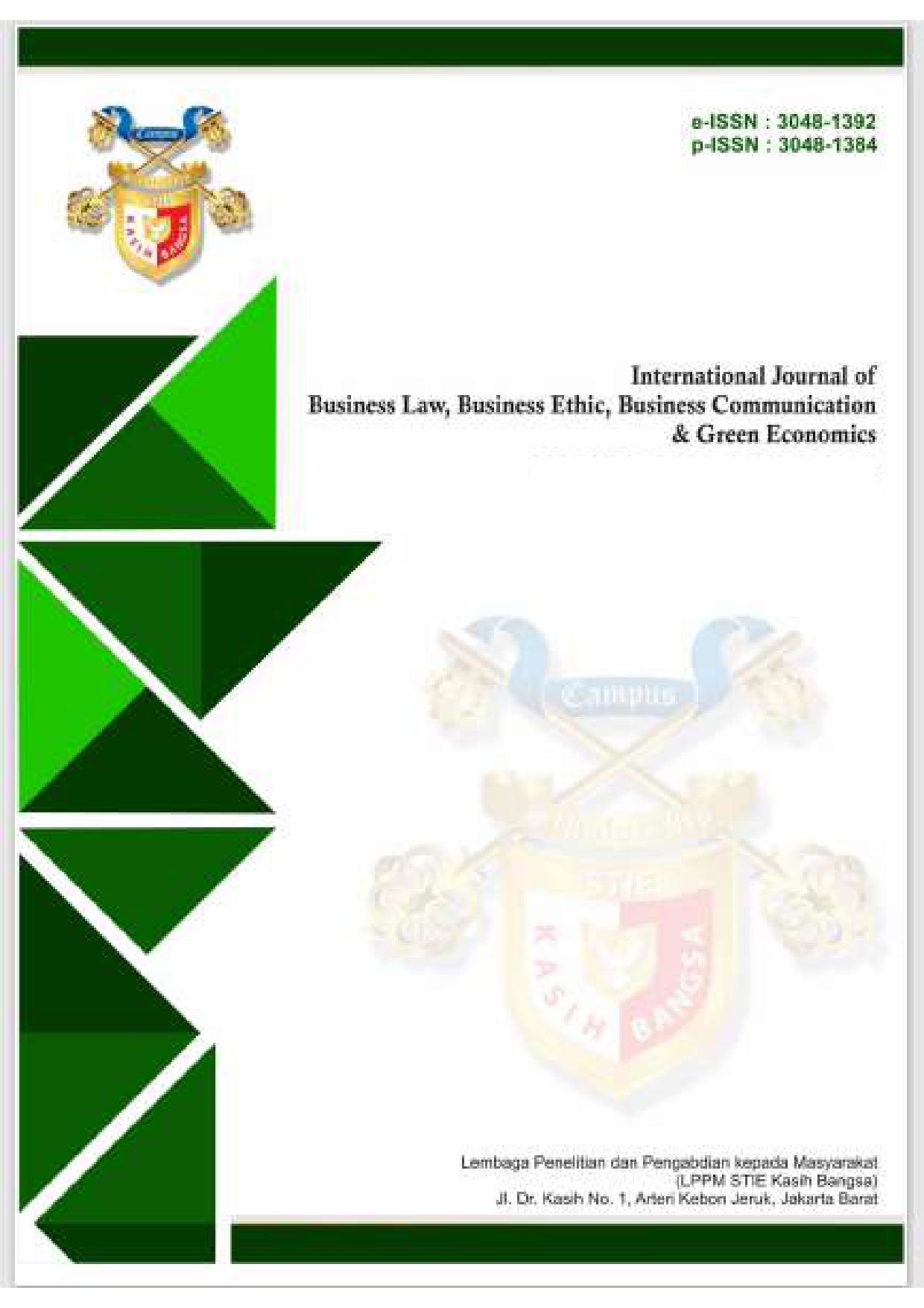Implications Finance from Use of Weather Derivatives (Derivatives Weather) for Hedging : An Overview Literature about The impact to Cost Energy Company Loans
DOI:
https://doi.org/10.70142/ijbge.v1i1.339Keywords:
Weather Derivatives, Hedging, Borrowing Costs, Energy Companies, Financial Risk ManagementAbstract
This qualitative literature review explores the financial implications of using weather derivatives as a hedging tool to reduce borrowing costs for energy companies. By synthesizing existing studies, the review highlights that weather derivatives significantly lower borrowing costs, with an average reduction of 21 basis points in borrowing rates. This cost-saving effect is more pronounced for companies with higher systematic risk or less complex financial statements. The review also finds that hedging with weather derivatives enhances financial stability and reduces bankruptcy risk, leading to more favorable borrowing terms. Furthermore, the benefits extend to the public debt market, with hedging companies enjoying lower bond yield spreads. Despite making important contributions, the study acknowledges limitations, including reliance on published literature and the need for further empirical validation. Overall, the findings highlight the value of weather derivatives in financial risk management for energy companies.
References
Addoum , J.M., Ng, D.T., & Ortiz- Bobea , A. (2020). Temperature shocks and establishment sales. Review of Financial Studies , 33(3), 1331–1366.
Addoum , J.M., Ng, D.T., & Ortiz- Bobea , A. (2023). Temperature shocks and industry earnings news. Journal of Financial Economics , 150(1), 1–45.
Allayannis , G., & Weston, J. P. (2001). The use of foreign currency derivatives and firm market value. Review of Financial Studies , 14(1), 243–276.
Allman, E. (2022). Pricing climate change risk in corporate bonds. Journal of Asset Management , 23(7), 596–618.
Bartram, S. M. (2019). Corporate hedging and speculation with derivatives. Journal of Corporate Finance , 57, 9–34.
Bartram, S. M., Brown, G. W., & Conrad, J. (2011). The effects of derivatives on firm risk and value. Journal of Financial and Quantitative Analysis , 46(4), 967–999.
Booth, A., Sutton, A., & Papaioannou, D. (2016). Systematic approaches to a successful literature review . SAGE Publications.
Braun, V., & Clarke, V. (2006). Using thematic analysis in psychology. Qualitative Research in Psychology , 3(2), 77–101.
Brockett, P. L., Wang, M., & Yang, C. (2005). Weather derivatives and weather risk management. Risk Management and Insurance Review , 8(1), 127–140.
Campello, M., Lin, C., Ma, Y., & Zou, H. (2011). The real and financial implications of corporate hedging. Journal of Finance , 66(5), 1615–1647.
Cao, M., & Wei, J. (2004). Weather derivatives valuation and market price of weather risk. Journal of Futures Markets , 24(11), 1065–1089.
Chen, J., & King, T.-HD (2014). Corporate hedging and the cost of debt. Journal of Corporate Finance , 29, 221–245.
Do, V., Nguyen, T.H., & Vu, T. (2024). Risk management and private debt contracts: The role of weather derivatives. Journal of Business Finance & Accounting . John Wiley & Sons Ltd. https://doi.org/10.1111/jbfa.12800
Gilje, E. P., & Taillard , J. P. (2017). Does hedging affect firm value? Evidence from a natural experiment. Review of Financial Studies , 30(12), 4083–4132.
Graham, J.R., Li, S., & Qiu, J. (2008). Corporate misreporting and bank loan contracting. Journal of Financial Economics , 89(1), 44–61.
Mohamad Chaidir , Grace Yulianti, & Benardi Benardi . (2024). Influence Volatility Equity and Leverage against Risk Investment . Journal of Management Vision , 10(1), 42–53. https://doi.org/10.56910/jvm.v10i1.556
Ngadi Permana , Mohammad Chaidir , & Sri Utami Nurhasanah . (2024). Revealing Influence Cost Trading and Risk Factors on Hedge Fund Performance. MASMAN Master Management , 2(2), 187–196.
https://doi.org/10.59603/masman.v2i2.683
Norden, L., & Wagner, W. (2008). Credit derivatives and loan pricing. Journal of Banking and Finance , 32(12), 2560–2569.
Patricia, M.C. (2023). Sustainable Retail Financing in Turbulent and Difficult Market Conditions: A Dynamic Capability Perspective. Journal of Management and Entrepreneurship Research , 4(1), 17-29.
https://doi.org/10.34001/jmer.2023.6.04.1-35
Pérez-González, F., & Yun, H. (2013). Risk management and firm value: Evidence from weather derivatives. Journal of Finance , 68(5), 2143–2176.
Rowe, F. (2014). What the literature review is not: Diversity, boundaries and recommendations. European Journal of Information Systems , 23(3), 241–255.
Snyder, H. (2019). Literature review as a research methodology: An overview and guidelines. Journal of Business Research , 104, 333–339.
Tranfield , D., Denyer, D., & Smart, P. (2003). Towards a methodology for developing evidence‐informed management knowledge by means of systematic review. British Journal of Management , 14(3), 207–222.
















